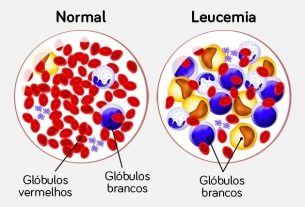Diuretics are medications that increase the volume of urine produced by increasing the excretion of water by the kidneys in response to an increase in salt elimination or a decrease in its reabsorption in the renal tubules. Thus, by reducing the amount of circulating fluid in the bloodstream, pressure in the arteries and swelling caused by fluid retention are reduced.
Furosemide, hydrochlorothiazide or spironolactone are examples of diuretic medicines, which are used to treat problems such as high blood pressure, heart failure and swelling in the ankles, feet and legs, caused by changes in the functioning of the heart or liver or kidney diseases, for example. .
There are different types of diuretics that can be used to treat swelling, which include potassium-sparing diuretics, thiazides, loop diuretics, carbonic anhydrase inhibitors or osmotic diuretics, although the latter two are used less frequently. Diuretics should only be used under the guidance of a doctor, as the type of diuretic must be adapted to the specific objective of the treatment.

5 diuretic remedies to reduce swelling
Some of the main diuretic remedies used are:
1. Furosemide
Furosemide (Lasix, Neosemid) is a loop diuretic and is indicated for the treatment of hypertension and swelling caused by diseases of the heart, liver or kidneys or swelling in the brain or caused by burns.
The recommended doses must be indicated by the doctor, as they depend on the problem to be treated.
2. Hydrochlorothiazide
Hydrochlorothiazide is a thiazide diuretic (Chlorana), indicated for controlling blood pressure and treating swelling caused by heart problems, cirrhosis, diabetes insipidus and preventing the formation of calcium oxalate stones in the kidneys.
Doses ranging between 25 and 200 mg per day may be recommended, depending on the problem to be treated and its severity.
Read too: 6 remedies for fluid retention (and natural options)
3. Spironolactone
Spironolactone (Aldactone, Diacqua) is a potassium-sparing diuretic and is indicated for the treatment of high blood pressure and swelling caused by problems with the functioning of the heart, liver or kidney disease. However, due to its weak action, it is usually combined with other diuretics with thiazides to increase their action.
Generally, doses ranging between 50 and 200 mg per day are recommended, depending on the instructions given by the doctor. See how to use spironolactone.
4. Amilorida
Amiloride is also a potassium-sparing diuretic and is generally associated with hydrochlorothiazide to treat high blood pressure, reduce swelling in the ankles, feet and legs caused by heart problems and to treat ascites, which is the accumulation of water in the abdomen. caused by cirrhosis.
Generally, it is recommended to take 1 tablet of 50 mg/5 mg per day, however the dose may vary according to the disease being treated.
5. Hydrochlorothiazide and spironolactone
It is a combination of 2 different types of diuretics (Aldazide), indicated for the treatment of high blood pressure and swelling caused by diseases or problems with the heart, liver or kidneys.
Generally, doses ranging from half a tablet to 2 tablets of 50 mg + 50 mg per day are recommended, depending on the problem to be treated. Find out more about the side effects of this medicine.
How to take diuretics
Any medicine with diuretic action should only be taken under the advice of a cardiologist, as when used incorrectly they can cause electrolyte imbalance, which are changes in the amount of important minerals in the blood, causing symptoms such as excessive tiredness, nausea, weakness and convulsions.
Furthermore, other problems such as dehydration or cardiac arrhythmias, for example, may also arise.
There are also natural diuretics, such as green tea, or diuretic foods, such as celery, cucumber or lemon, as they have a similar effect to medicines, but with fewer health risks. See a more complete list of some natural diuretics.
However, natural diuretics do not replace medications prescribed by a doctor and their use in combination with medications can put one’s life at risk. Therefore, before starting to use a natural diuretic, it is important that a doctor is consulted. .
Make an appointment with a cardiologist in the nearest region:
Taking care of your health has never been easier!
Bibliography
- ANVISA. Aldazide (spironolactone and hydrochlorothiazide). 2022. Available at: <https://consultas.anvisa.gov.br/#/bulario/q/?nomeProduto=ALDAZIDA>. Accessed on Aug 10, 2023
- PATEL, H.; et al. Peripheral Edema: Evaluation and Management in Primary Care. Am Fam Physician. 106. 5; 557-564, 2022
- KOIRALA, A.; et al. Etiology and Management of Edema: A Review. Adv Kidney Dis Health. 30. 2; 110-123, 2023
- ANVISA. Furosemide. 2022. Available at: <https://consultas.anvisa.gov.br/#/bulario/q/?nomeProduto=FUROSEMIDA>. Accessed on Aug 10, 2023
- ANVISA. Hydrochlorothiazide. 2023. Available at: <https://consultas.anvisa.gov.br/#/bulario/q/?nomeProduto=HIDROCLOROTIAZIDA>. Accessed on Aug 10, 2023
- ANVISA. Spironolactone. 2022. Available at: <https://consultas.anvisa.gov.br/#/bulario/q/?nomeProduto=ESPIRONOLACTONA>. Accessed on Aug 10, 2023
- ANVISA. Amiloride hydrochloride + hydrochlorothiazide. 2022. Available at: <https://consultas.anvisa.gov.br/#/bulario/q/?nomeProduto=CLORIDRATO%20DE%20AMILORIDA%20%2B%20HIDROCLOROTIAZIDA>. Accessed on Aug 10, 2023

Sign up for our newsletter and stay up to date with exclusive news
that can transform your routine!
Warning: Undefined array key "title" in /home/storelat/public_html/wp-content/plugins/link-whisper-premium/templates/frontend/related-posts.php on line 12
Warning: Undefined array key "title_tag" in /home/storelat/public_html/wp-content/plugins/link-whisper-premium/templates/frontend/related-posts.php on line 13





